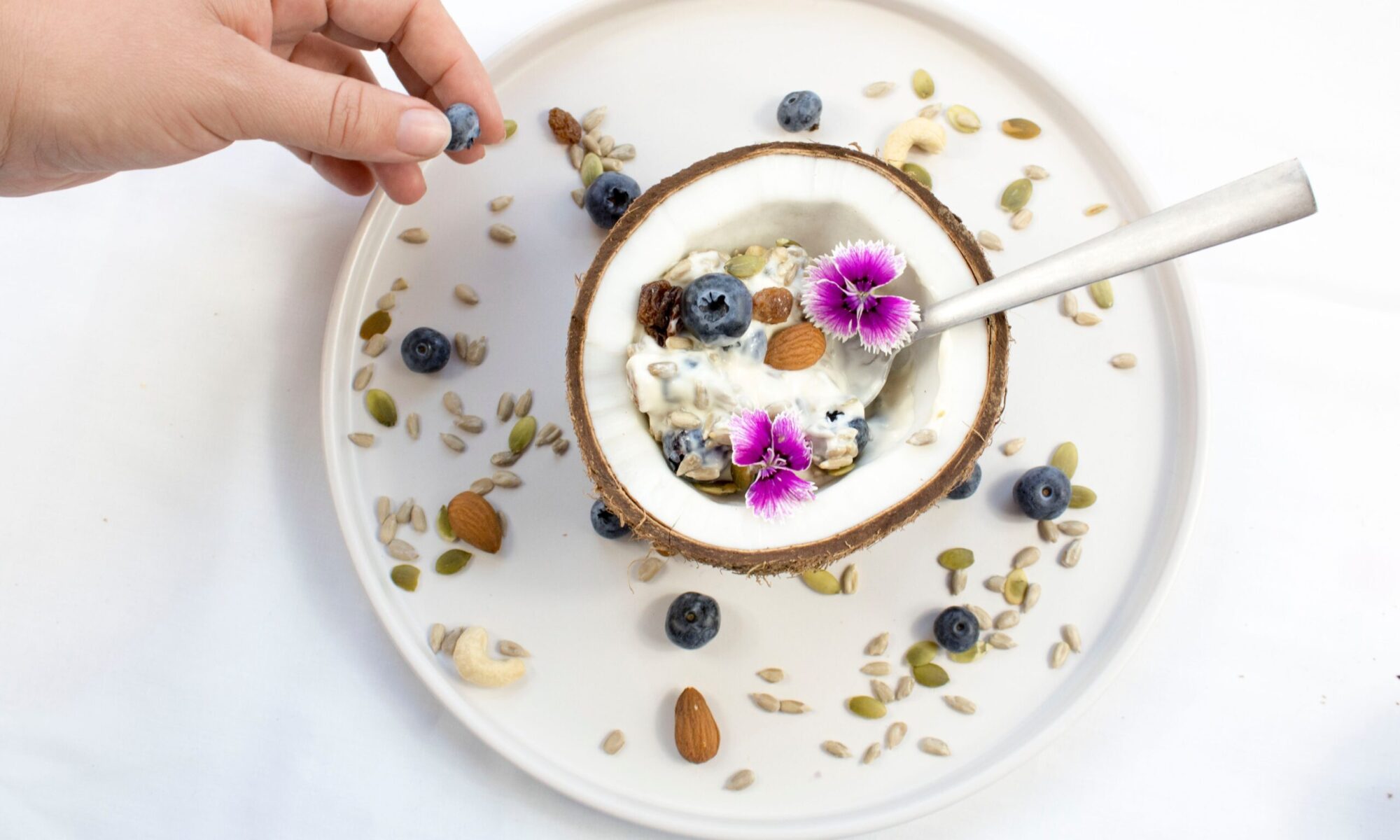
There is an ongoing battle going on for survival in your intestines between good vs bad bacteria. And the winning team is directionally proportional to how many plant based foods you eat. Space and nutrients are limited, and only the strongest will survive. Researchers estimate over 100 trillion microbes from anywhere between 500-1000 different species residing within the human intestines, alongside countless numbers of viruses and fungi. The composition and balance of these bacteria are constantly changing, with factors such as age, diet, lifestyle and antibiotic exerting the most influence.
Beneficial Gut Bacteria
The good guys (such as Bifidobacterium, Lactobacillus) live symbiotically with us, thriving on plant based prebiotic fibers (the more colorful the better) and resistant starches (the parts of grains, seeds, legumes we are unable to digest) and converting them into inflammation reducing short chain fatty acids and brain boosting neurotransmitters. The metabolites they produce in the way of short chain fatty acids also help to maintain a low acid environment in the colon, which discourages the growth of acid loving pathogenic bacteria. As if those benefits are not enough to make you want to add more fruits and vegetables to your diet, these healthy bacteria also make important contributions to human metabolism and physiology by converting the plant based fibers we are unable to digest and into enzymes and vitamins (such as B & K).
Harmful Gut Bacteria
On the other hand, the bad guys, or more harmful bacteria that can take over, love processed high sugar / fat foods and are scientifically proven to produce pro inflammatory endotoxic byproducts. When they overgrow and crowd out the good guys and cause a condition known as dysbiosis (basically this means the bacteria in the gut is imbalanced) this can trigger a bigger problem – leaky gut syndrome. Leaky gut syndrome happens when the delicate intestinal lining which protects our bodies from the outside world of potential toxins and pathogenic invaders is compromised, and it is with this loss of gut barrier function that endotoxins are allowed to pass from the gut lumen into systemic circulation. GI disorders, obesity, cardiovascular diseases, allergy and central nervous system-related diseases can all manifest under these circumstances.
Armed with this knowledge, we can connect the dots and understand how our bodies, by way of our healthy bacteria, benefit from consuming more plants. Let’s make feedings the good guys, and starving out the bad ones a daily practice.
For those interested in learning more about how nutrition impacts the gut microbiome, here is a highly recommended presentation given by Dr. Alessio Fasano, chief of Pediatric Gastroenterology and Nutrition at Mass General Hospital for Children. In this video he presents evidence on the connection between nutrition, microbiota composition, key intestinal functions, including gut permeability, and immune response leading to chronic inflammatory diseases.
